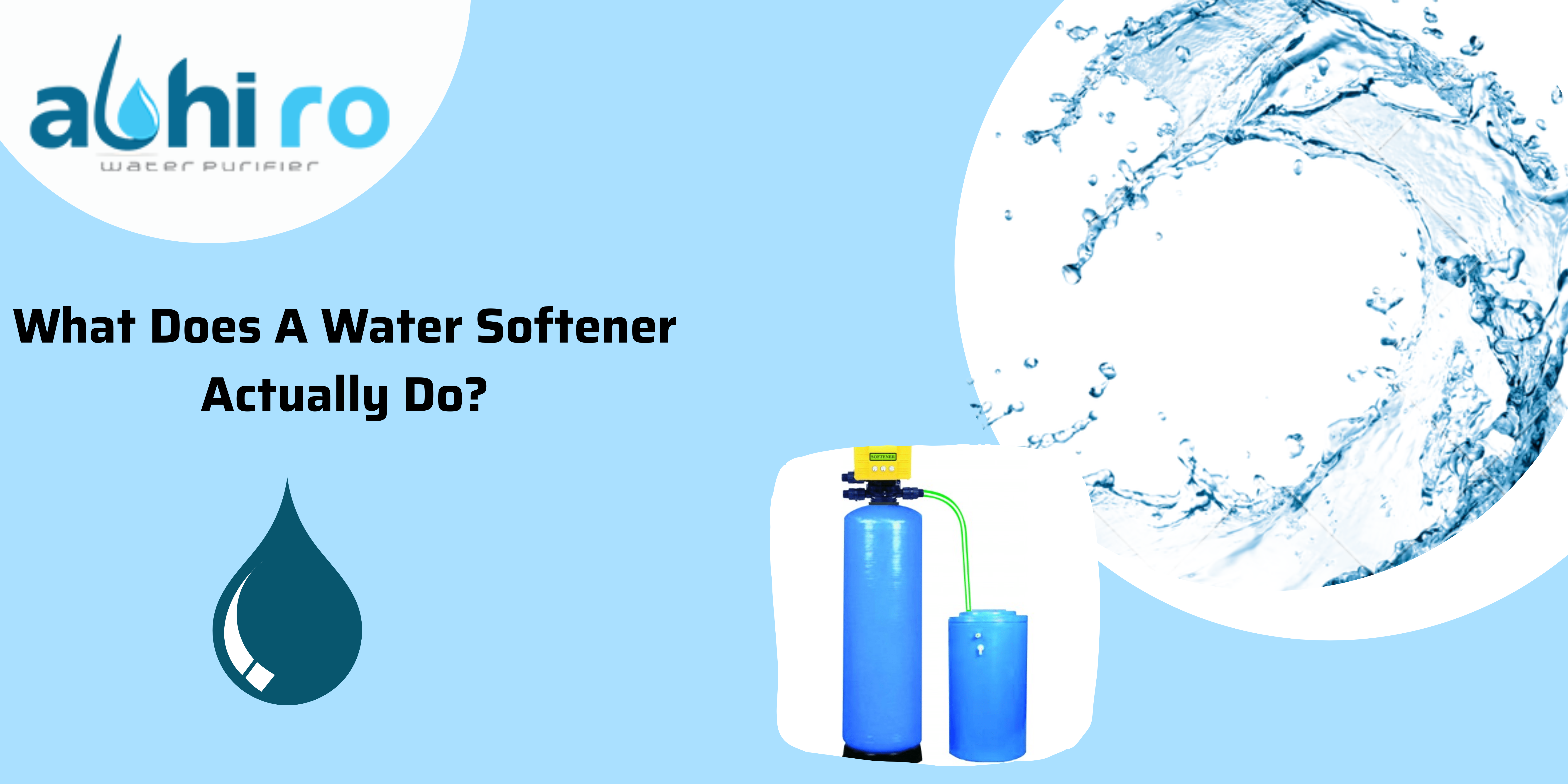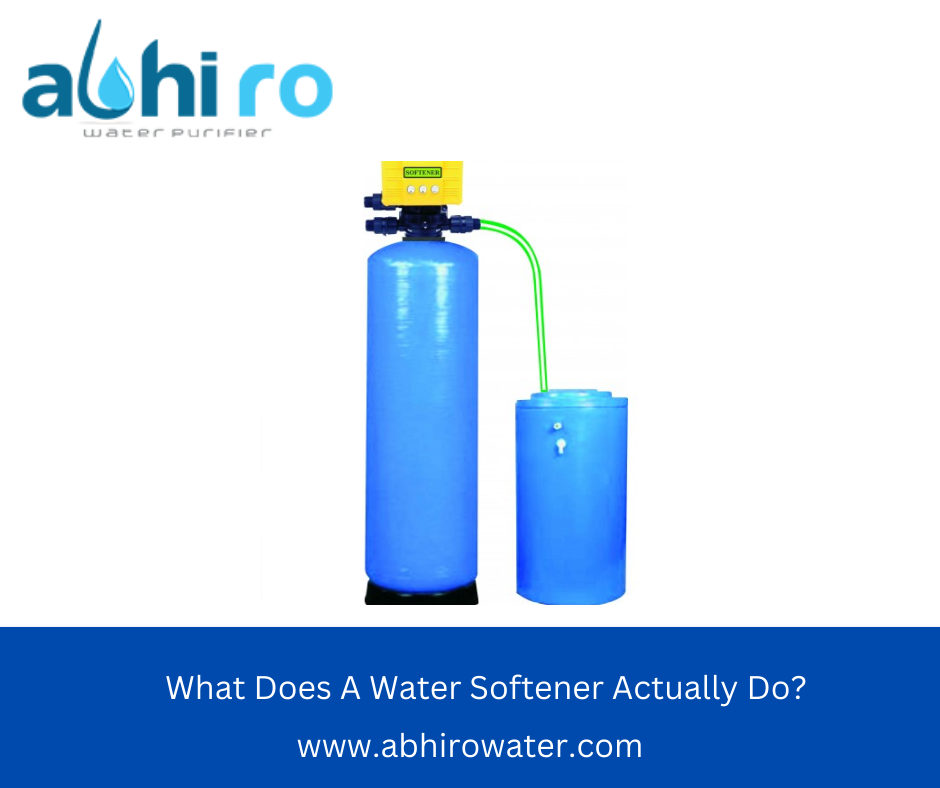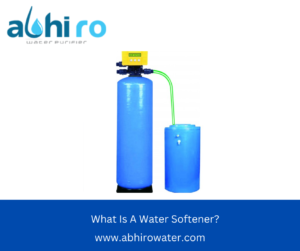If you have every wondered what does a water softener actually do? Read till the end to know about all of it. A water softener is a device that is used to remove certain minerals from water. These minerals are typically calcium and magnesium, which can cause problems in terms of plumbing and appliances.
A water softener will replace these minerals with sodium or potassium, which will not cause the same problems. Most people have heard of water softeners, but many don’t know exactly what they do or how they work.
Simply put, a water softener is a device that is used to treat hard water. Hard water contains high levels of minerals like calcium and magnesium, which can cause a variety of problems. For instance, hard water can lead to limescale buildup in pipes and fixtures, making them less efficient and more likely to break.
Hard water can also make it difficult to get laundry clean, and it can even cause skin and hair problems. A water softener works by exchanging the minerals in hard water for sodium ions.
This process is known as ion exchange, and it results in softer water that is much easier on fixtures, pipes, laundry, and skin. If you’re struggling with hard water, a water softener may be the solution.
All You Need To Know: What Does A Water Softener Actually Do
Most people have heard of water softeners, but many don’t actually know what they do or why they might need one. Essentially, a water softener is used to remove minerals from hard water, making it softer and easier on both your skin and your hair.
Hard water can be tough on your appliances as well, as the minerals can build up and cause damage over time. While you can certainly live without a water softener, many people find that their quality of life improves significantly after making the switch.
In addition to being gentle on your skin and hair, soft water can also prolong the life of your appliances and save you money on soap and shampoo. If you’ve been considering a water softener, there’s no need to wait any longer – give it a try and see for yourself!

What Is A Water Softener?
A water softener is a device that is used to remove excess minerals from water, such as calcium and magnesium. Water softeners are often used in homes with hard water, as the excess minerals can cause a variety of problems, such as soap scum buildup and mineral deposits on fixtures and appliances.
There are two main types of water softeners: salt-based and ion exchange. Salt-based water softeners work by adding salt to the water, which helps to remove the excess minerals.
Ion exchange water softeners work by exchanging the ions in the water with ions from a resin bed. Water softeners are an important part of many people’s home plumbing systems, and they can be a great way to improve the quality of your water.
What Are The Benefits Of A Water Softener?
There are many benefits of water softeners, especially for those who live in areas with hard water. Water softeners work by removing minerals such as calcium and magnesium from the water, which can cause a number of problems.
For example, hard water can cause scale build-up on plumbing fixtures and appliances, making them less efficient and more difficult to clean. In addition, hard water can make it difficult to get clothes clean when laundry is done in it.
Soap does not lather as well in hard water, and as a result, clothing may come out looking dull and feeling stiff. Finally, hard water can leave skin and hair feeling dry after showering or bathing. Water softeners provide a number of benefits by helping to remove these minerals from the water.
As a result, laundry is easier to do, dishes come out cleaner, and skin and hair feel softer after bathing. If you live in an area with hard water, a water softener can be a valuable addition to your home.
What Are The Components Of A Water Softener?
A control valve, a mineral tank, and a brine tank are the three parts of a water softener. Together, these three devices monitor water flow, take out the minerals from hard water, and periodically clean the system by regenerating it.
1. The Mineral Tank
The area where the hard water is softened is called the mineral tank. The hard water is fed into the tank through the water supply line. The calcium and magnesium ions that cause water to harden are deposited as the water seeps through the resin bead bed. Soft water runs through your pipes and out to your home appliances as it leaves the tank.
2. The Control Valve
The control valve counts the volume of water that enters your home after passing through the mineral tank. A meter that measures the amount of water entering the mineral tank is housed in the valve.
The resin beads switch out the sodium ions for hardness ions as the hard water passes through the mineral tank. This gradually reduces the resin’s ability to continue to soften water effectively.
The control valve starts a regeneration cycle automatically before the mineral content in the beads makes it impossible for them to continue extracting calcium and magnesium ions.
The onboard computer of the control valve has a maximum capacity that is pre-programmed and dependent on a variety of variables, including the size of your home, the number of people, and the hardness of your water. The extraordinarily high efficiency of control valves, and demand-initiated controllers, are used in water softening units.
3. The Brine Tank
The renewal of the water softening system is aided by the brine tank. The tank is smaller and is placed next to the mineral tank. To restore the positive charge of the resin beads, a highly concentrated solution of salt (or occasionally potassium) is kept in the brine tank.
Blocks or pellets of salt are manually added to the brine tank. These disintegrate in the water at the tank’s bottom. The heavy brine solution is taken out of the tank and pumped through the resin in the mineral tank when the control valve detects that the resin’s softening capacity is waning. The unit’s ability to soften water will stop working if the brine tank runs out of salt.
FAQs: What Does A Water Softener Actually Do
Q 1: What is a water softener’s drawback?
A 1: The main drawback of softening water is that it may pose health problems to those who follow low-sodium diets. For every gpg of hardness eliminated, salt is added in exchange for hardness minerals at a rate of 7.5 milligrams per quart. The homeowner also cuts off calcium and magnesium from their diet.
Q 2: Will Softened Water Taste Good?
A 2: The quantity of salt in the treated water will depend on how hard the original water was, even though most softened water is absolutely safe to drink. Before you soften the water, if the calcium hardness is less than 400 ppm, you can drink it without any worry.
Q 3: Why Is Soft Water Slimy To The Touch?
A 3: Sodium ions take the place of those magnesium and calcium ions in soft water. The end outcome is salty, soft water. The water feels slimy because of the salt. After purchasing a water softener, you could feel slimy and slick, as if you haven’t completely washed off the soap.
Q 4: Does Soft Water Benefit Your Skin More?
A 4: Hard water’s undesirable minerals can interact chemically with this naturally occurring oil to clog pores and bring on outbreaks. Your skin will be less dry and less stripped of its natural oils when you use soft water, which will result in smoother skin and fewer breakouts.
Final Thoughts
A water softener is a device that is used to treat hard water. It works by exchanging the calcium and magnesium ions in the water for sodium ions. This process makes the water less likely to form scale and soap scum, which can cause problems in your home.
If you are thinking of purchasing a water softener, it is important to understand how they work and what type would be best for your needs. We hope this article has helped to clear up any confusion about what does a water softener actually do and given you the information you need to make an informed decision.
Read more What Is A Water Softener? Mechanism Behind A Water Softener?



